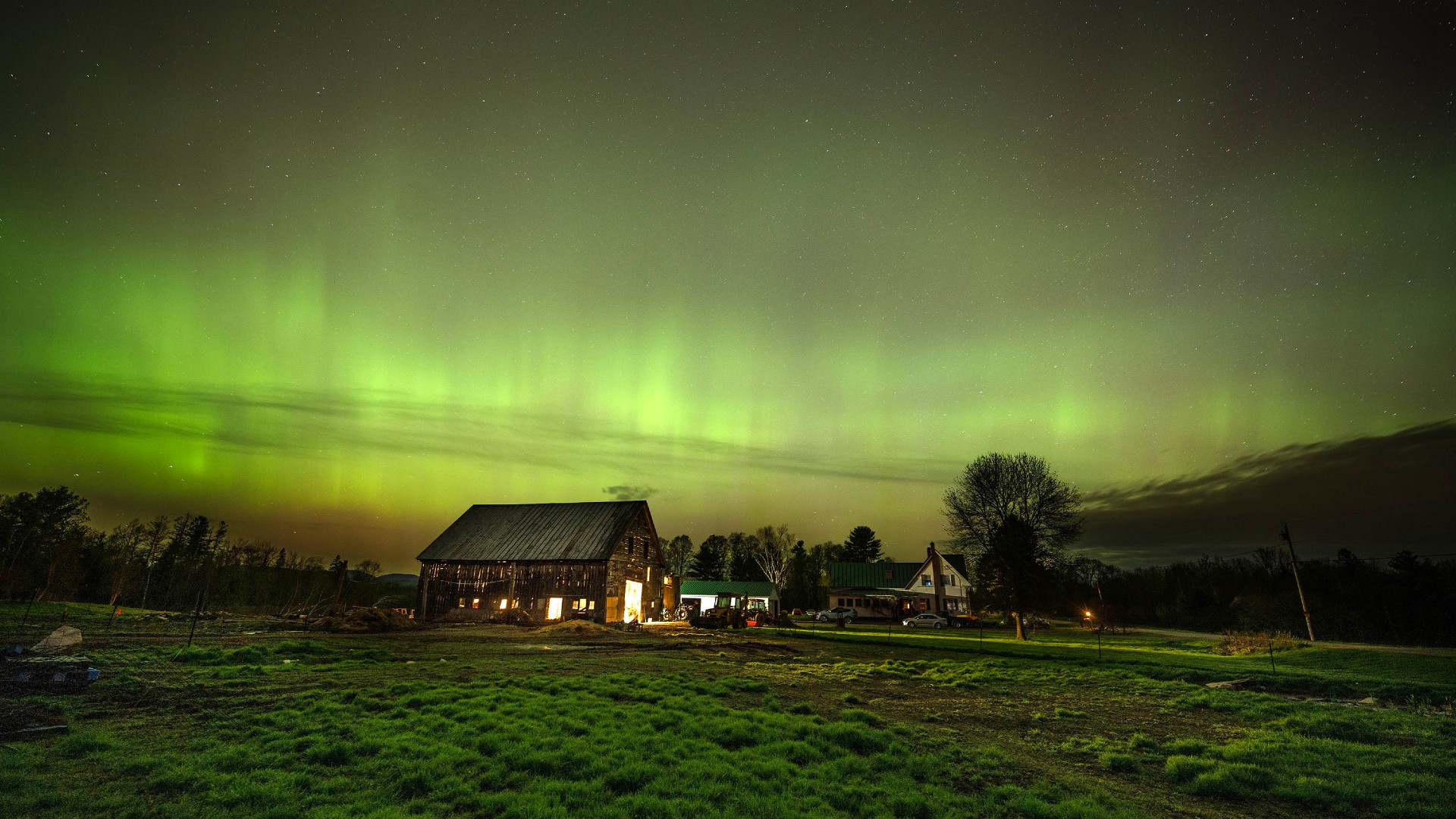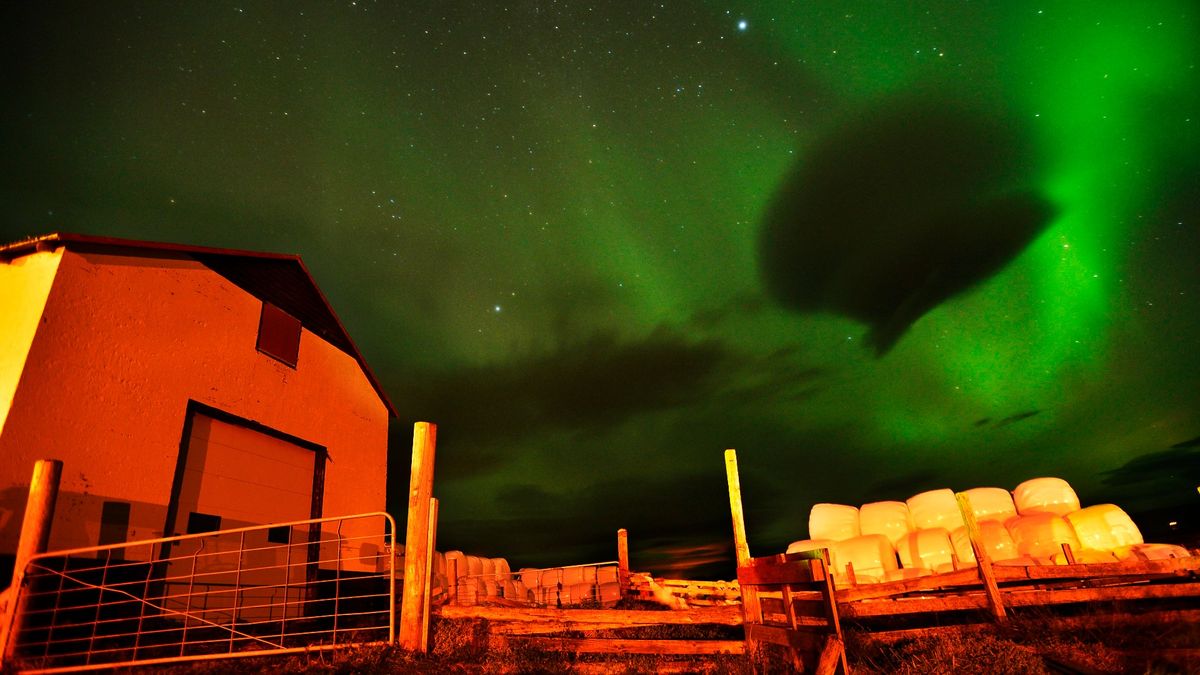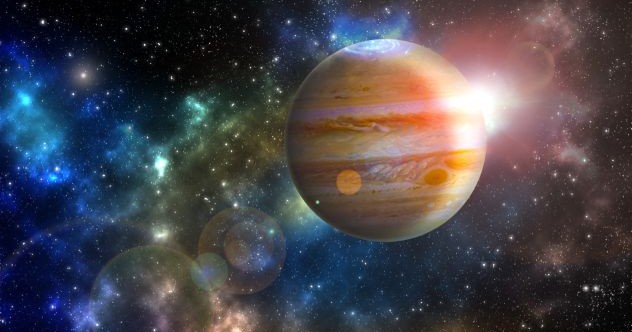Location signals beamed to Earth by GPS satellites were off by hundreds of feet during the Gannon Solar Storm in May last year, and the disruption lasted for up to two days in some U.S. regions, a new study has revealed. The outage wreaked havoc across the farming sector, which suffered losses of more than $500 million as a result.
A succession of powerful solar eruptions in early May last year triggered the most powerful solar storm to hit Earth in 20 years. Later named after the deceased space weather scientist Jennifer Gannon, the solar storm produced awe-inspiring auroras visible as far south as Mexico, Portugal and Spain. It also made GPS go haywire for days.
Farmers in the American Midwest, at that time at the peak of the planting season, reported their GPS-guided tractors acting like they were “possessed” during the storm, according to accounts. A new study has now quantified how big those GPS errors were not only during the height of the storm, but also in its aftermath when a lingering aurora continued to skew GPS signals.
A team of researchers from Boston University used data from close to 100 high-accuracy, fixed GPS receivers scattered across the U.S. that form a seismic research network that measures the motions of tectonic plates. As it turns out, the network is also perfectly suited to study space weather effects in Earth’s ionosphere, a layer of electrically-charged air found 30 miles (48 kilometers) above Earth. The effects that solar storms have on the ionosphere can affect the readings of GPS receivers.
“GPS receivers work with the assumption that the ionosphere has a uniform plasma density,” Waqar Younas, a space physics researcher at Boston University and lead author of the paper, told Space.com. “But a solar storm creates irregularities in the ionosphere and as the signal passes through the ionospheric layers, it grows errors.”
When a solar storm hits, the charged solar particles it brings with it heat up and disturb the ionosphere. As the weak signals from the global positioning satellites pass through this suddenly turbulent region, they get thrown off course.
Because the fixed GPS receivers in the research network are firmly attached to the ground, any change in their positioning data could only be a result of turbulence in the ionosphere. Measurements from this scientific GPS network revealed the scale of these errors with great accuracy, and enabled researchers to reconstruct what had gone on in the ionosphere during the storm.
“By measuring the disturbance of the signal, we can tell the structure of the plasma in the upper atmosphere,” Toshi Nishimura, a professor of space physics and co-author of the new study, told Spapce.com.

Analysis of the data revealed that the storm created a “wall of ionospheric plasma,” stretching across the North American continent. This wall threw off GPS signals by up to 230 feet (70 meters) in central U.S. states, with smaller errors of up to 65 feet (20 m) reported in the southwestern parts of the country.
The peak disruption lasted for about six hours on May 10, 2024, but things remained unsettled for up to two days, the study showed. After the shaken ionosphere began to calm down, the auroral lights triggered by the storm caused further GPS disruptions as charged particles from space trickled through the atmosphere along disrupted magnetic field lines. The GPS receiver network showed errors up to 30 feet (10 m) for the duration of these auroras.
The erratic behavior of GPS-guided farming machinery caused by the Gannon solar storm cost American farmers in the U.S. midwest more than $500 million, according to Terry Griffin, a professor of agricultural economics at Kansas State University.
“Because of the Gannon storm, planting of corn got delayed because our planters were mostly inoperative,” Griffin told Space.com. “Currently, about 70% of planted acres in the United States rely on equipment that uses GPS automated guidance to make straight parallel lines through the field. We no longer even have physical road markers, and the equipment is getting bigger to the point that we can no longer operate when the GPS is taken away.”
But agriculture was not the sole victim of the space weather-induced GPS mayhem. Aircraft rely on GPS not only to follow their paths but especially to know their precise altitude during landing. Errors of up to four meters can be compensated for, according to Nishimura. But the disruption on May 10 and 11 last year was “way beyond that tolerance window,” Nishimura said.
The Gannon solar storm may have been the strongest in two decades. But it only provided only a weak taste of what the sun is capable of. The frequently discussed worst case scenario is the so-called Carrington event — a storm that hit Earth in 1859, knocking out telegraph services all over the world. A storm of that strength today would no doubt have wide-ranging consequences around the world.
“During the Gannon storm, we saw the most intense impact in the central regions of the U.S.,” Nishimura said. “But for a Carrington-sized event, we would see disruption all over the continent and errors so large that the signal would be unusable.”
Waqar says that in the future, real-time forecasting of ionospheric disruptions paired with AI-driven forecasts of GPS signal irregularities could help correct the errors as a storm progresses.
The study was published in the journal JGR-Space Physics on June 9.
























